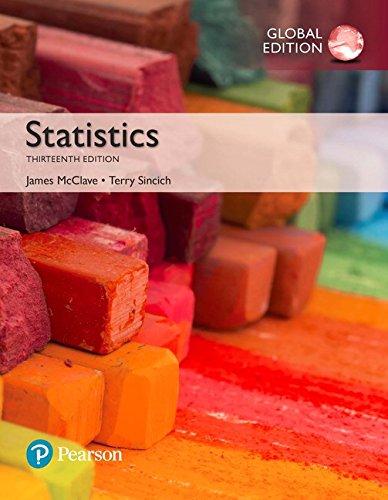Lobster trap placement. Refer to the Bulletin of Marine Science (Apr. 2010) observational study of lobster trap
Question:
Lobster trap placement. Refer to the Bulletin of Marine Science (Apr. 2010) observational study of lobster trap placement by teams fishing for the red spiny lobster in Baja California Sur, Mexico, Exercise 7.41 (p. 363). Trap spacing measurements (in meters) for a sample of seven LO9 teams of red spiny lobster fishermen are reproduced in the accompanying table. Let m represent the average of the trap spacing measurements for the population of red spiny lobster fishermen fishing in Baja California Sur, Mexico. In Exercise 7.41 you computed the mean and standard deviation of the sample measurements to be x = 89.9 meters and s = 11.6 meters, respectively.
Suppose you want to determine if the true value of m differs from 95 meters.
93 99 105 94 82 70 86 Based on Shester, G. G. “Explaining catch variation among Baja California lobster fishers through spatial analysis of trap-placement decisions.” Bulletin of Marine Science, Vol. 86, No. 2, April 2010 (Table 1), pp. 479–498.
a. Specify the null and alternative hypotheses for this test.
b. Since x = 89.9 is less than 95, a fisherman wants to reject the null hypothesis. What are the problems with using such a decision rule?
c. Compute the value of the test statistic.
d. Find the approximate p-value of the test.
e. Select a value of
a, the probability of a Type I error.
Interpret this value in the words of the problem.
f. Give the appropriate conclusion, based on the results of parts d and e.
g. What conditions must be satisfied for the test results to be valid?
h. In Exercise 7.41 you found a 95% confidence interval for m. Does the interval support your conclusion in part f?
Step by Step Answer:






